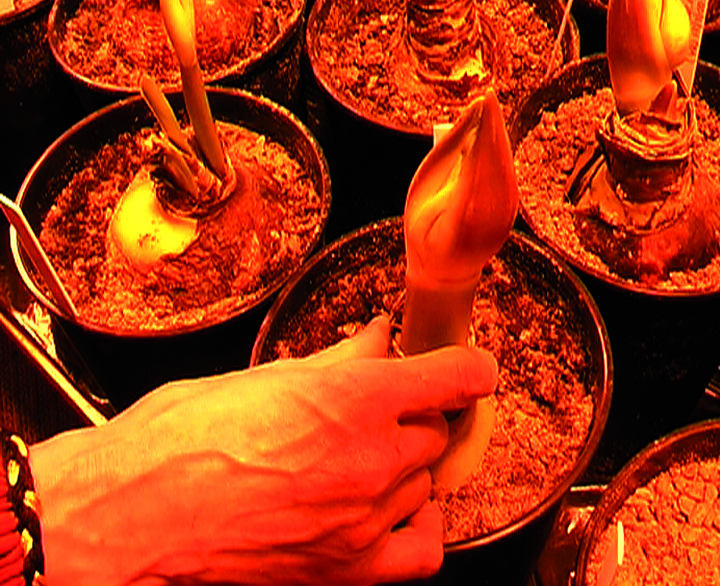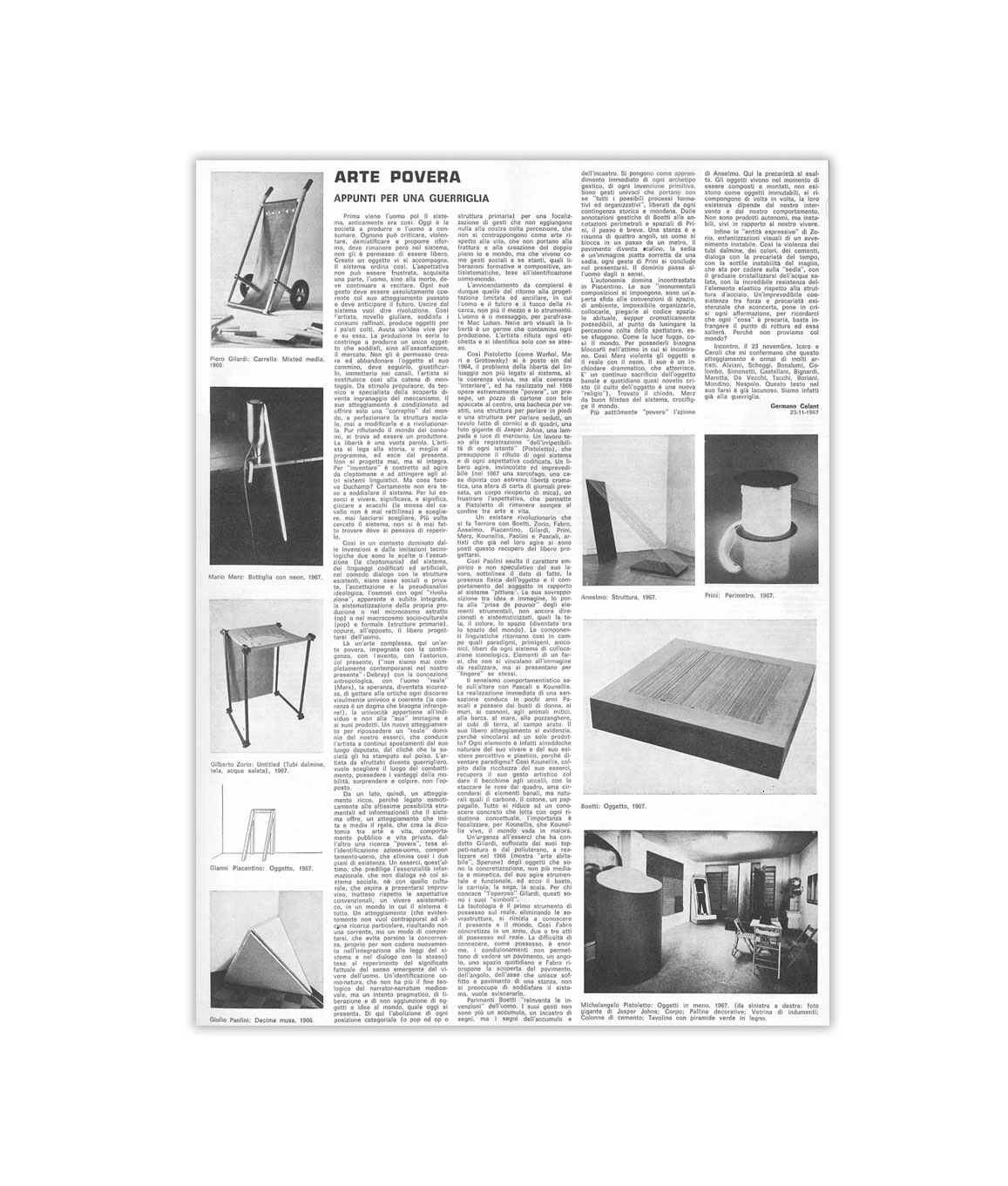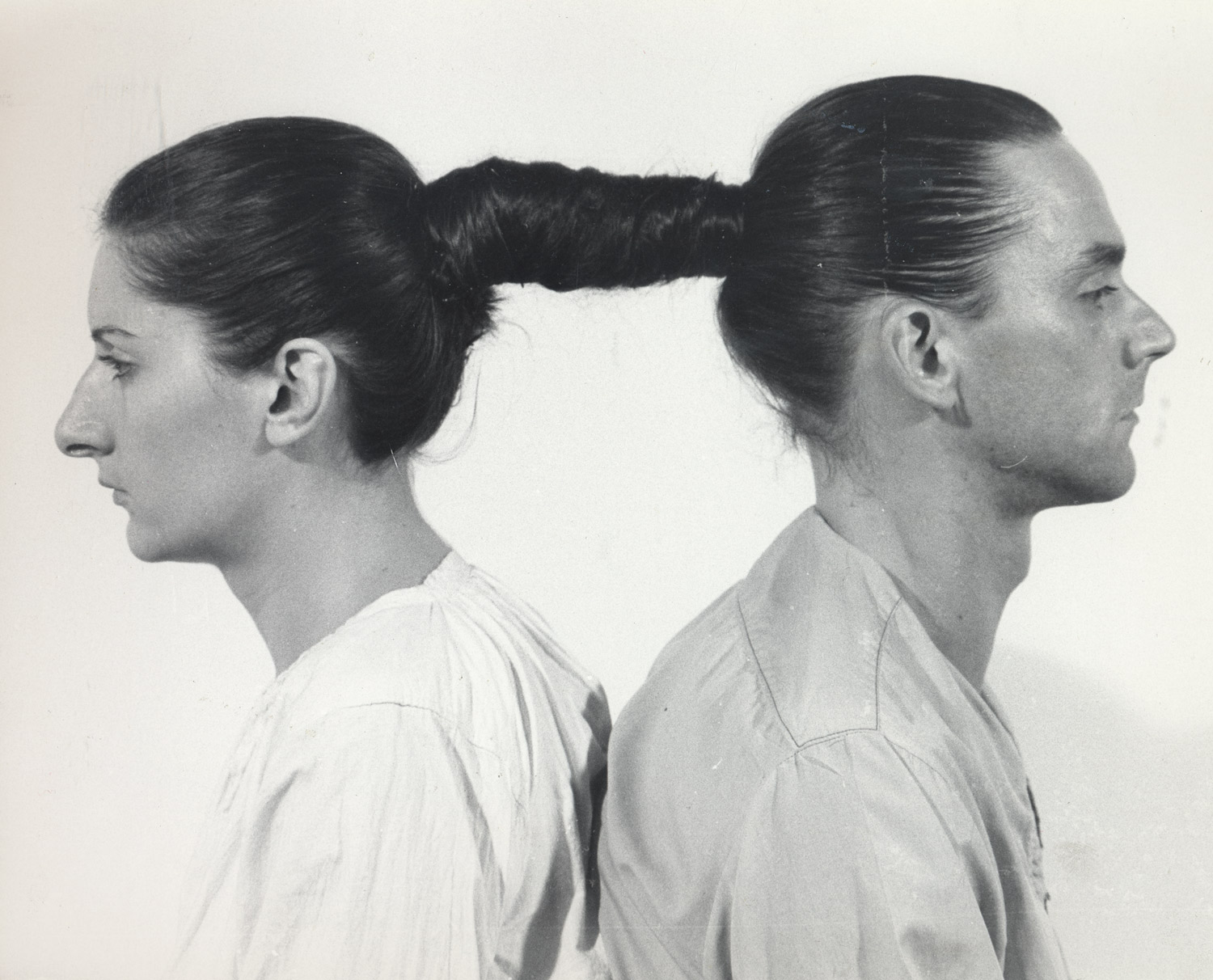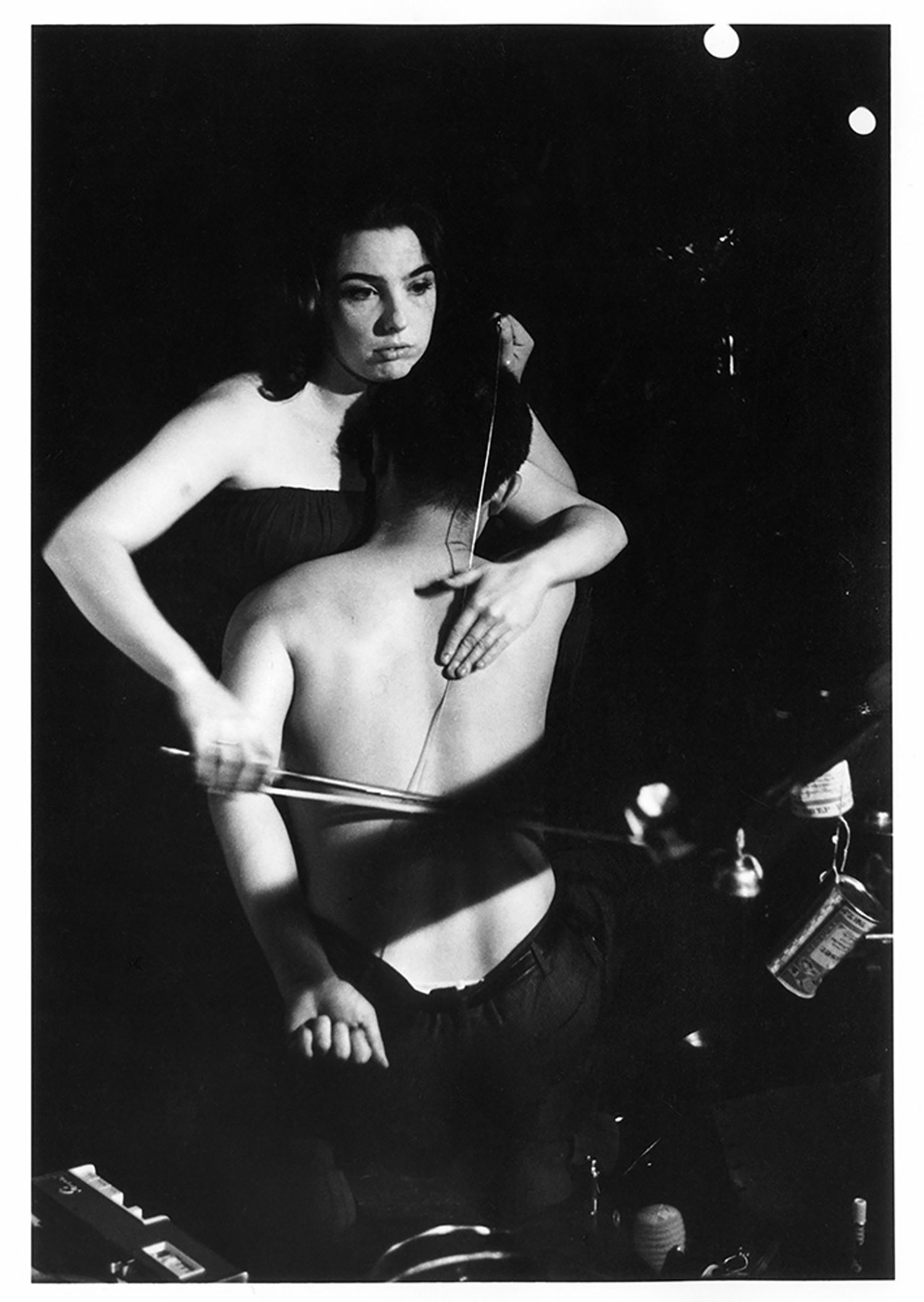
I arrive 30 minutes late. It is one of those mornings where you get out of the house on time and you arrive late anyway (believe me, I’m not lying this time). I arrive at the Sofitel and both Atom and Kutlug have already met and have started without me.
Kutlug Ataman: Shall we go into the tearoom?
Gea Politi: Wherever you like. By the way, is it Atom or Aton? Because sometimes you have it written with ‘m’ and sometimes with ‘n.’
AE: That’s a mistake.
KA: It’s with ‘m’… I always wondered about this, does it come from ‘atom’?
AE: It’s a very strange origin. My parents gave it to me because of the atomic age but now when I go back to Armenia there is an Armenian name ‘Adom.’ In Eastern Armenian the ‘d’ is pronounced with a ‘t’ so they think it’s a very pure old Armenian name.
KA: As I was saying before Gea arrived, this woman from a newspaper who was interviewing me said: “We kept this fax to show you, maybe it’s best if you see it,” and… it’s a death threat! [Laughs.]
AE: With Ararat, I got many threats — several were from the military. Usually from some General. Obviously somebody was organizing this.
KA: I am trying to make a film in Cyprus, also a difficult terrain. There’s so much paranoia and rumor going on. At some point you just don’t know anymore if you are fabricating that yourself or if someone else is.
AE: Yeah, I just think it’s a state of mind you can allow yourself to fall into, or not. When Ararat was at its peak in Cannes, during the premiere, I suddenly realized when I saw these large men around me for security, I was feeling more paranoid of them, and so I just thought “Forget it, it’s insane!”
KA: And it becomes unfortunately part of the PR as well. I mentioned this ‘death threat fact’ to the English distributor of one of my films, and now even in the States I get questions about this. It becomes like a label that you don’t want to carry forever, like “Kutlug Ataman is the controversial artist who gets death threats!”. You know, I think my pieces are more like witnesses rather than ideas.
AE: Are you familiar with the Atlas Group? I find their work really fascinating. When I went back with my wife to Lebanon, from where she escaped during the Civil War, I could see an extraordinary sense of trauma that people have very conveniently decided not to address because it’s too painful and fresh. There is this huge body of work which is proclaiming these fictitious events, and the collision between reality and art-making becomes really provocative.
KA: But it doesn’t really go to the greater society as it does here in England or in Canada. Unfortunately in our region art is still a very solitary practice.
AE: But it’s also more of a provocation, though. In the Eastern environments it becomes more appreciated and rarefied, but it’s too well understood. What’s interesting about these pieces in environments where people may not be as prepared is that they have a more visceral effect because these pieces create anger.
KA: I don’t know really the situation in Lebanon, but I don’t assume that the general public goes to art exhibitions.
AE: There is a community of artists who are working there.
KA: So it’s a limited kind of elite. [Atom nods] That’s how it is in Turkey.
AE: But then, you do have a response to Küba through the Internet and the newspaper, so in that way it has been disseminated through the country. Is that an extension of the piece?

KA: No. That was counterproductive. What happened was that without seeing the piece they were commenting on the piece, and they were quoting things from my mouth. There was this “Turks” exhibition at the Royal Academy [2005], right when Küba was taking place in London, and it was one of those typical Turkish-government-sponsored exhibitions where you have the underwear of the Sultans [laughs], embroideries, some paintings, some artifacts or whatever — everything was kind of backward looking and always with this attempt to create something glamorous.
AE: So Küba was seen as a black dot by the press, I imagine…
KA: Yeah, the press got very upset in Turkey and they were saying stuff like “Kutlug is doing the Kurds show against the Turks show,” which I would have never said because I don’t base anything on nationalism, and that is not really about my work. My work is really about showing how identity itself is fabricated, so all my characters and subjects are in fact fake in a way, because they are reconstructed during the editing.
AE: But why don’t you see that the media response is an extension of that and therefore also a fabrication?
KA: Oh, this is already part of life…
AE: I’ll give you an example with the piece I was doing in Montreal, Hors d’usage (2002). I think that the installation began with the press conference where we announced the project and we invited the public to find these machines, these reel-to-reel tape recorders. So in a way, we were using the new technology of the net to recover the ancient, and in a similar way I would say that you are providing these mediated images, but are creating almost a fantasy of what that show means as it interfaces with the actual present day. Even though it’s out of your control, it is an extension of the piece itself. How long is Küba all together?
KA: The full length of all narrations is twenty-eight hours, split into forty pieces, so you cannot just sit down and watch it all… it’s an island story and you are visiting it with your own kind of traffic and navigation. So, no one can ever have the same exposure to Küba, which is important for me because I wanted to highlight that ‘documentary,’ as it is claimed, doesn’t exist. This opened new doors for me; it was a chance to comment on what reality is or how we know each other. Is identity always role-playing? Or is it something else? I found all these similarities with fiction. Where does it come from? Why is there such a thing as fiction?
AE: Yeah, there’s the whole question of the movement away from the screen itself. I figured that one of the reasons I’ve been so excited about installation pieces is that I get frustrated by the monolithic idea of projection. That physical editing that you were talking about is very exciting in that the viewer is physically displaced, and physically makes decisions. In film, you can create a zone where the viewer is able to invest himself and use his or her own evolution and imagination, but ultimately when you see something projected, no matter how curious you are, there is some passivity.
GP: Do you feel the need to become physical when it comes to art?
AE: I find that the most liberating aspect of working with art galleries is to actually play with the physicality. It’s like Shirin Neshat’s Turbulent (1998). You are in a room, there are different things happening on two screens and you cannot really absorb both at the same time. As you move between them, you are acting as an editing machine, through your own physicality. I wish there was some way to be able to develop these ideas. That’s why I’m happy about what happened with the Turkish press after the opening of Küba.
KA: [Laughs] As long as you are away from it and you don’t have to deal with all this…
AE: But I’m thinking about Ararat. People, especially many Turkish people, had an idea of the film without seeing it, and they would get very angry about it… to me the crucial moment was when Ararat was bought for distribution and it still wasn’t released because there was a nationalist wing who threatened to bomb the theater.
KA: You see, in my case, I have to be commercial now with the pressures that I have. Otherwise I cannot exist in Turkey!
AE: There’s an interesting contrast between the Western idea of compensation, attention and distribution and the non-Western, more primal need for accessibility. We take accessibility for granted; we are very spoiled and we want something more substantial.
KA: The scary thing is that we all exist because of our stories, and if your stories are not told or preserved then your history doesn’t exist anymore. You have an official history, or whatever, but your oral history, your mythology, is very important: you either exist or not.
AE: But then it becomes a question of someone receiving that story and thinking that the story is worth communicating. In your work you are surrendering that act to a technological device. I mean, your camera is actually doing this work for you. Your commitment is to put a camera there and to transpose it to a screen or to a television. And you are able to hand that responsibility to a viewer
KA: It’s always a degree removed. I’m more interested in pointing to the whole of this problem through my work, rather than doing a film about an opera singer or women who wear wigs; it’s never for its face value. The individuals who live in Küba are very important, but my main point was never Küba. It was an experimentation. Up until now I have worked with individuals fabricating identities, and I filmed that process: how they fabricate this role, how they make themselves stars, heroes.

AE: Are you disillusioned with feature filmmaking?
KA: I am not disillusioned, but I’m finding it very difficult. The reason I went into art is because I have to make films in Turkish because of my stories. I lived in Los Angeles for fifteen years, but nevertheless I was always thinking in Turkish when it came to the actual story; I was never capable of thinking of Western stories. I went to Los Angeles when I was eighteen so I never really became part of it. It was too late for me to go to America.
All my films have subtitles, which means that you are in another league and it’s very difficult: you have to have state sponsorships, which means that you have to deal with the government. A good example is this film I am trying to make in Cyprus; by simply not giving support they effectively block the production. So I was disillusioned, but of course I love the fact that you can make a film and it can live a hundred years. The reason I went into art was because it was more immediate and I was producing much faster and I felt more free, but slowly I am getting disillusioned with the art world as well — the same division between commercial cinema and the art house, I’m discovering, exists in contemporary art. You have the commercial system and sometimes they start telling you: “Your pieces are in Turkish. Do you think you can make them in English the next time?”
AE: Really? You get that pressure? From my perspective, you are like an art star! Aren’t you?
KA: You still have to access money. As we say in Turkish, “the one who pays gets to play the part!” I have to be commercial now with the pressures that I have. I am willing to make more commercial films now, because otherwise I cannot exist in the Turkish cinema market.
AE: Yes, it’s interesting, because in my last film some people were surprised it doesn’t seem like one of my movies!
KA: Like an Atom Egoyan movie!
AE: But I loved making it, it was so much fun!
KA: I didn’t see it. Is it a comedy?
AE: It’s not like a comedy, but it’s very lurid! Very sensationalist, you’ll see it.





